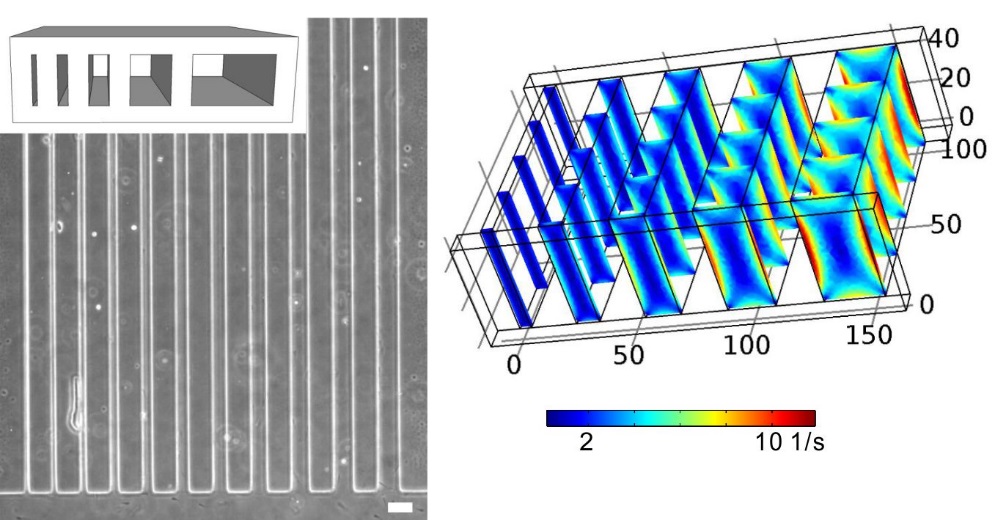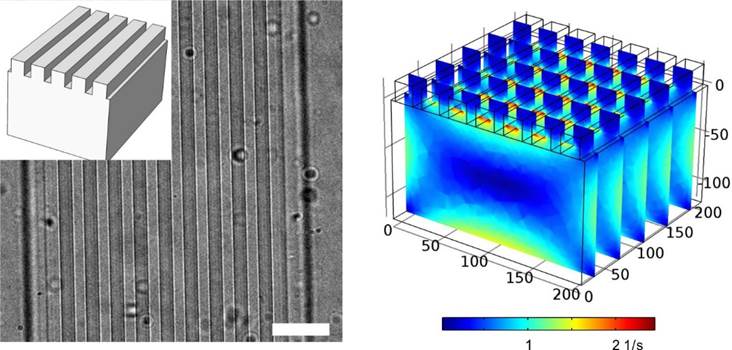A microfluidic device with various surface architectures for the studies of sperm migration
In collaboration with Susan S. Suarez's group at the Department of Biomedical Sciences, we also develop microfluidic devices to study how the surface architecture of female reproductive tracts influence sperm migration. It is known that there are microchannels on the side walls of cervix and uterotubal junction, but how those structures facilitate the sperm migration is unclear. This study has two focuses, one is from the effects of a solid-liquid interface, and the other is from the fluid flows. Two different geometries are made, which provide us with clues to the same questions from different angles.

Left: schematics and a device image of a series of channels with the same height but different widths, with bull sperm in them. Scale bar: 50 ?m. Right: a COMSOL Multiphysics simulation of the shear stress distribution within such a structure when a flow is present in the channels.

Left: schematics and a device image of a series of grooves with different widths on one side of the main channel. Scale bar: 50 ?m. Right: a COMSOL Multiphysics simulation of the shear stress distribution within such a structure when a flow is applied.
Site created and maintained by Young Joon Suh

